The refractive power of our natural lenses_Part V (Presbyopia)
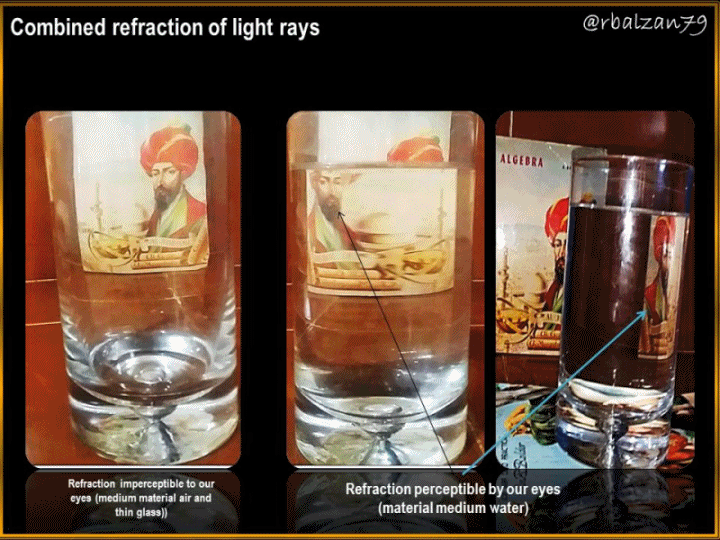
Introduction
So far our journey has been really wonderful in terms of capturing, and with it, deepening our knowledge in relation to the phenomenon of light, verifying how light rays are and will be responsible for transporting images to any space-time and especially to our very complex natural optical systems such as our eyes.
From there we start to highlight the enormous value of light for our existence since we must remember that it is the cornerstone both for the structuring of our electromagnetic spectrum and to capture any kind of knowledge of our environment, which is why when we learn any aspect of light, we are also relating to its intrinsic phenomena such as refraction.
Therefore my dear readers, the phenomenon of refraction, and with it, the refractive power of the different material or elastic media have been fundamental for the generation of each of the images that reach our retinas, and this from the point of view both artificial and natural in the case of our eyes.
Let us remember that light rays propagate from one side to the other in a straight line as long as they do not meet certain obstacles on their way that make them bend or refract and thus change their directionality as we have been able to analyze in previous articles, and this time we will continue with our main purpose, that is, to demonstrate the importance of refraction in the generation of images, and also, as such refraction develops differently depending on the medium through which the light passes.
Our enormous capacity for invention has led us to develop or design different types of lenses artificially, and consequently, each of them has certain refractive power with which it manages to converge or diverge certain beams of light when these rays pass through them, the above features, no doubt, have allowed us to correct the anomalies that are generated in our eyeball when there is somehow a defect in the refraction of light rays by our natural lenses such as the cornea and lens.
Throughout this thematic series we have been related to an important magnitude in the field of optics as it is the Diopter since it has allowed us to measure the refractive power of any type of lens either artificial or natural, and therefore, we continue to express in general that the Diopter represents the inverse value of the focal length of our natural lenses such as the cornea and lens of artificial origin implemented for the correction of a certain bad focus of the images on our retina.
As we have done so far in previous presentations related to this thematic series, this time we will continue to highlight the valuable action of the phenomenon of refraction to our environment and how it can develop at any time of our existence, and also, in the same way we will link in a general way with another ametropia which we have called presbyopia.
Refracted light rays in our environment
Undoubtedly, when we are able to observe everything around us, it is because each of these bodies or objects are a source of light emission, otherwise our optical systems would not be able to capture these transported images, where the role of refraction, as we have said, plays an important role, so we will perform another significant practical experience in order to observe this essential phenomenon of refraction.
For this opportunity we will link with several material or elastic media such as air, glass, water and transparent sphere, remember that the air could be considered as imperceptible for the action of refraction of light because its refractive index is very close to that of vacuum, however, we can observe a combined refraction perceptible when the light rays pass through media such as glass, water and transparent sphere.
Therefore, my dear readers, you will be able to see how the light rays refract or bend when crossing the walls of a glass container, to then pass through the water inside the container and then refract in our small transparent sphere, and thus in this way reach our natural optical systems (eyes), then, the above mentioned can be visualized in the following images:
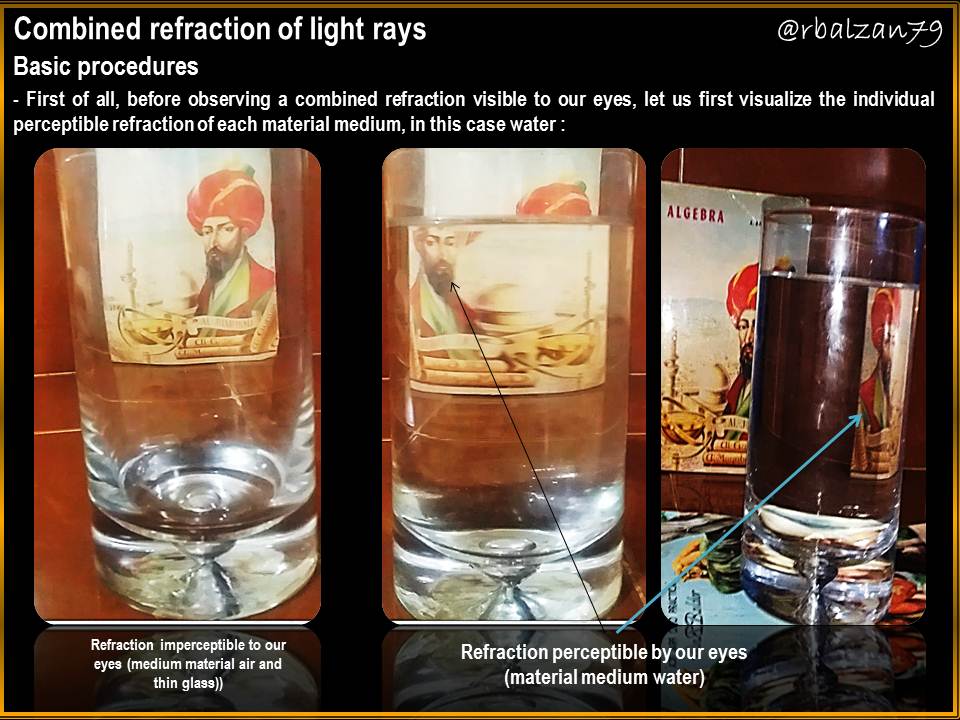
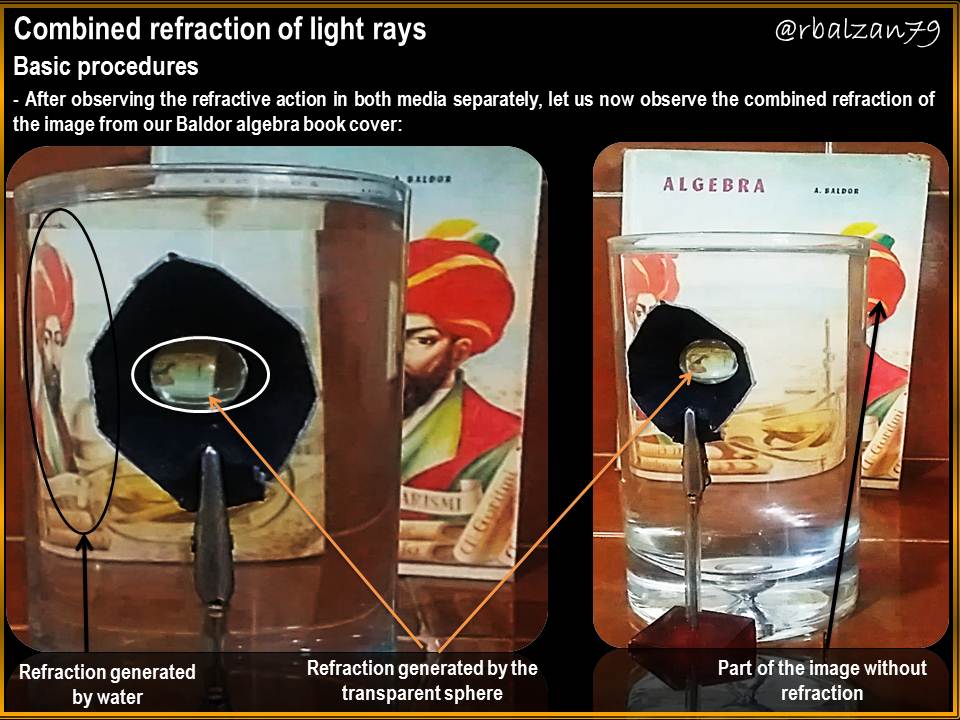
In the previous images it was possible to visualize the effect of the phenomenon of refraction of light rays when passing through various material media, therefore, you can see the behavior of these light rays when passing through the media described above in Figure 1 below.
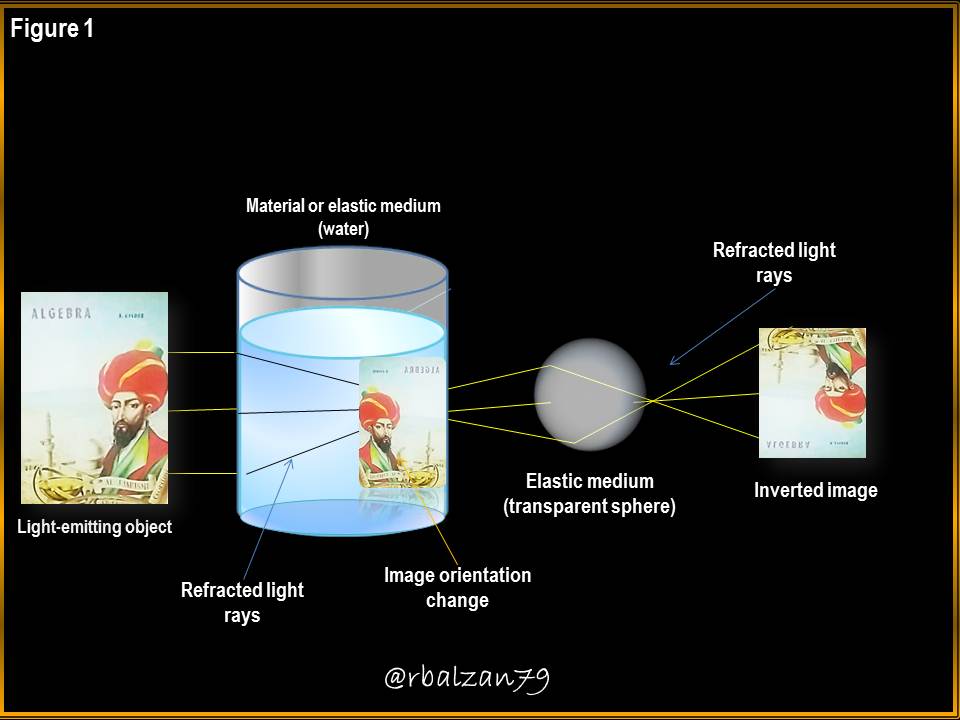
In the previous deliveries we have dealt with the general behavior of light rays in some ametropias such as myopia, hyperopia, astigmatism, and now we will analyze presbyopia in general.
Light rays in an aging or presbyopic eye
With this type of ametropia we all find ourselves as we get older, of course, some get it a little earlier than others, ametropias are refractive errors caused by our natural lenses (cornea and lens), and thus, the images carried by light rays can not be projected efficiently on our retina.
It is important to express my dear readers that presbyopia represents in the human being a normal degenerative process in relation to the functioning of the refractive action of our eyes, so this type of refractive deficiency is also known as eyestrain, or more precisely as aging eye.
As time goes by, our whole body loses its original potential in all senses, and our optical system does not escape from this degenerative action, for example, it loses its natural capacity of accommodation, which is carried out specifically by the lens when it increases its curvature due to the contraction of the small ciliary muscles.
This refractive defect is presented to us from about 45 years of age, and usually tends to stop at age 65, this degenerative effect of refraction can be observed in certain people around us when they try to read something and have to move away the object from which they want to read something.
As it has been expressed in other opportunities, we must always bear in mind that light rays propagate in a straight line, and also, parallel to each other, and this characteristic can be seen in an emmetropic or normal eye with its proper functioning of the accommodation mechanism, as we can see in the following figure 2.
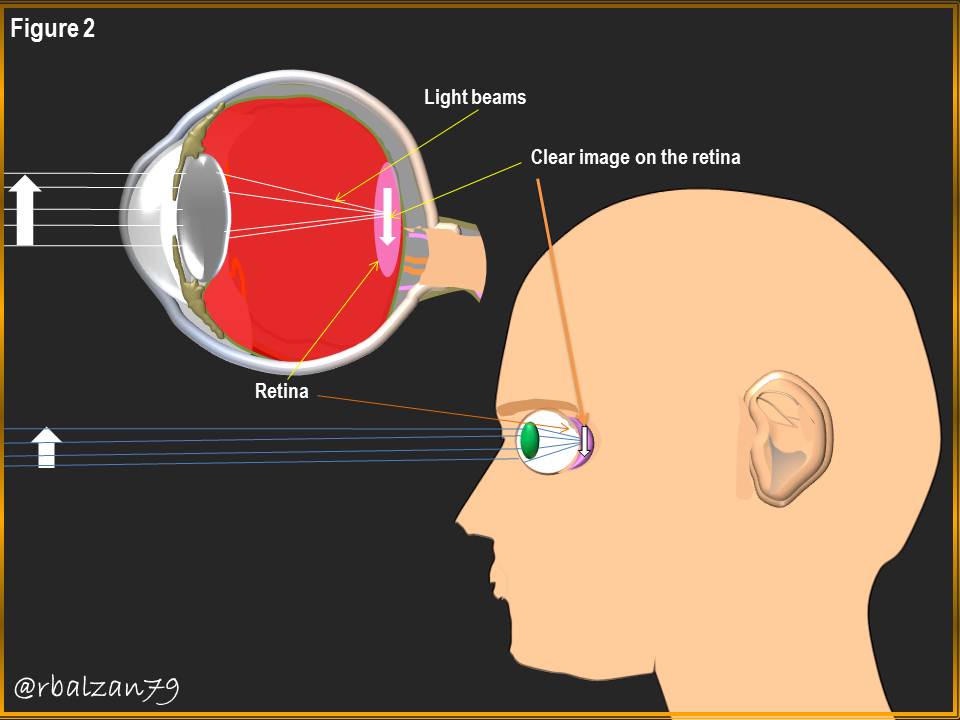
In the previous figure 2, we could see the normal functioning of our accommodation mechanism, and thus a proper refraction of light rays to our retina, and thus, generating sharp images, however, when observing the action of light rays in an aged, tired or presbyopic eye we see how the accommodation mechanism is not effective generating the image is projected behind the retina as you can see in the following figure 3.
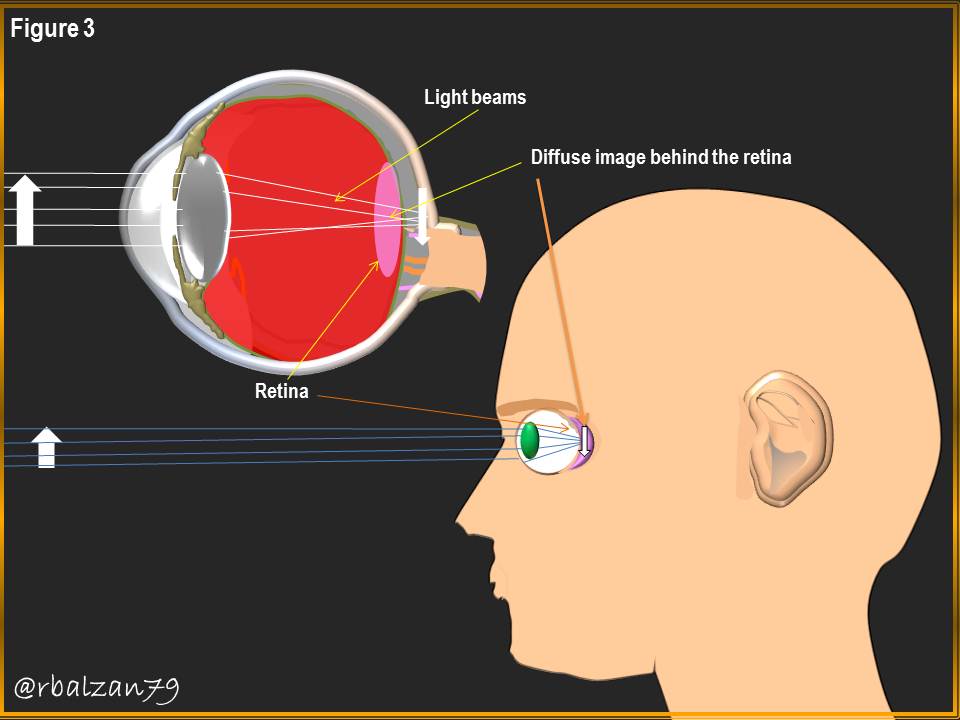
In general terms, we can say that this loss of refractive power can be corrected through the implementation of positive or convergent biconvex artificial lenses, highlighting that the refractive or dioptric power of these lenses must be increased until presbyopia stops.
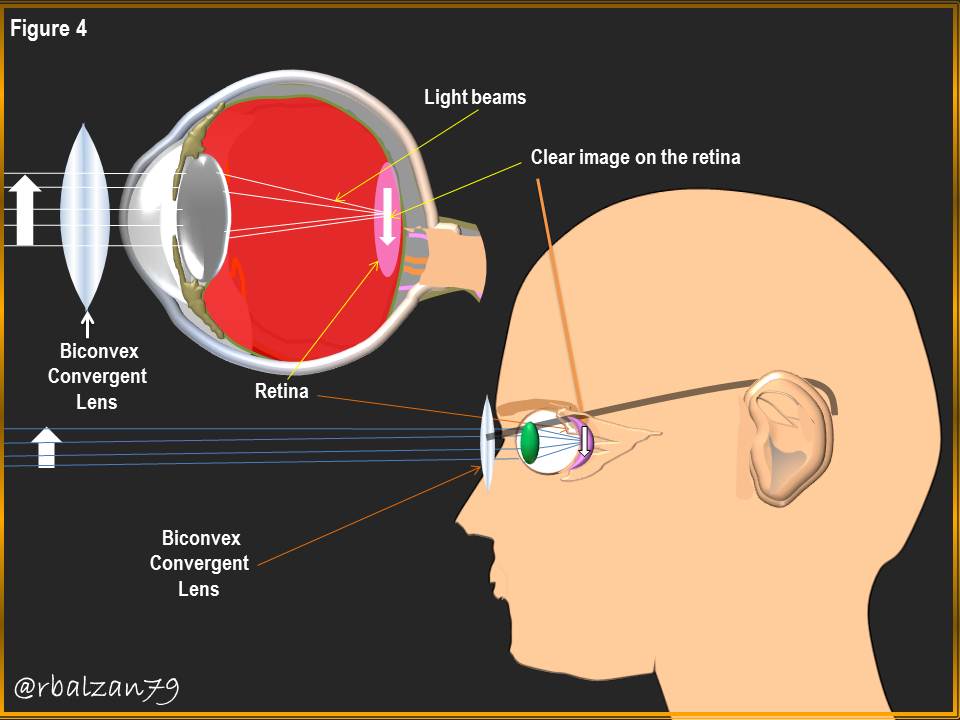
Conclusion
Everything we observe through our optical systems is thanks to the action of light, without light, we would not have the pleasure of being able to see our wonderful natural environment, which is why this phenomenon has captivated our attention throughout our history, which has motivated us to go structuring fertile areas such as optics in order to consolidate more and more the generation of images in both artificial optical systems, and of course, in our own.
We continue to verify the great importance of intrinsic phenomena in the propagation of light rays such as refraction, and in this way, the refractive power of materials such as artificial lenses and our natural lenses such as the cornea and crystalline lens, as well as the refractive power of our natural lenses such as the cornea and crystalline lens.
Our natural optical systems will not always be able to refract in a normal way the light rays that enter them in order to project the images we see on our retina, that is why we find ametropias such as myopia, hyperopia, astigmatism, presbyopia, among others, however, thanks to the work of optical science it has been possible to correct these ametropias or refractive defects of our natural lenses.
Until another opportunity my dear Hive readers, especially to the members of the great #STEMsocial community, for which I highly recommend being part of this beautiful project, as it allows us to highlight the excellent work of the academy and the enormous work of the entire scientific field.
Note: All images were created using the Power Point application and the animated gif was created using the PhotoScape application, the photostatic images were captured with the camera of the Samsung Galaxy J2 Pro cell phone.
Bibliographic references consulted and recommended
[1]Presbyopia corrections: optical, perceptual and adaptational
implications.
[2]Refractive power of lenses (Diopter). Author: @rbalzan79.
[3]Refractive power of lenses (Diopter)_Part II. Author: @rbalzan79.
[4]The refractive power of our natural lenses / Diopter of the human eye. Author: @rbalzan79.
[5] The refractive power of our natural lenses_Part II (Myopia). Autor: @rbalzan79.
[6] The refractive power of our natural lenses_Part III (Hypermetropia). Autor: @rbalzan79.
[7]The refractive power of our natural lenses_Part IV (Astigmatism). Autor: @rbalzan79.
It is nice to read the next episode of this series. I am always smiling when I read that light propagates as a straight line, as I am always seeing the next steps when electromagnetic waves arise. But of course, the latter are irrelevant for this post :)
Hello my dear @lemouth, it is also nice to receive your visit to my article, greetings and thank you for your great contribution to it.
I am always visiting your articles, even if i don't necessarily comment them :)
Happy new year by the way!
@lemouth thanks to the work of all of you in this wonderful community I have been able to learn a lot and contribute some knowledge to the rest of the colleagues who make excellent publications, and also happy new year to you and your family.
I actually somehow got really curious about the calculus book your post which turns out to be from this guy https://en.wikipedia.org/wiki/Aurelio_Baldor In the Spanish speaking part of the world the standard books are quite different :3
Hi friend @mathowl, it's my old Balbor algebra book I implemented it in my college algebra classes over 20 years ago. Greetings and thanks for your visit to my post.
Thanks for your contribution to the STEMsocial community. Feel free to join us on discord to get to know the rest of us!
Please consider delegating to the @stemsocial account (85% of the curation rewards are returned).
You may also include @stemsocial as a beneficiary of the rewards of this post to get a stronger support.
Thank you dear @STEMsocial comonity for such important support. Regards.
To see an object, that object must be able to reflect light and the eyes too must be able to receive the light rays. I think to see clearly involves a lot of stages that happen within split seconds. But can I ask you a question, is myopia and presbyopia has to do with the age of eyes?. Also, hyperopia is when light falls behind the retina if I am correct. You have a well written post @rbalzan79
Hello friend @steepup thank you for your wonderful comment, in general terms we can say that farsightedness occurs due to a short eyeball, ie small, and therefore, a shorter axial length of the norm, however, as in myopia this type of ametropia can develop due to deficient action in the aspect of refractive power of both the cornea and lens.
As for presbyopia, it is related to our age since this causes our natural lenses (cornea and crystalline lens) to lose elasticity and thus refractive power to carry light rays to the retina.
If you are right hyperopia is that the focal point converge behind our retina for the above mentioned, anyway in the bibliographic references of this article are links to other articles related to both myopia and hyperopia.
Thanks for your great contribution to the content developed in this opportunity, greetings.